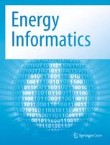Citation Impact 2023
Source Normalized Impact per Paper (SNIP): 0.761
SCImago Journal Rank (SJR): 0.568
Speed 2023
Submission to first editorial decision (median days): 10
Submission to acceptance (median days): 52
Usage 2023
Downloads: 394,833
Altmetric mentions: 17
Countermeasures to promote sustainable construction and coordinated development of healthy cities: a case study of Dandong City
In order to promote sustainable construction and coordinated development of healthy cities in small and medium-sized cities, as well as to improve people's happiness, this paper takes the border city of Dandon...
